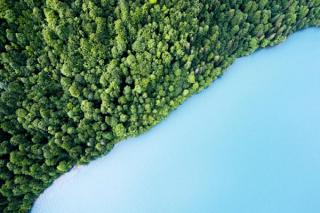
Why social impact must be accounted for like climate and nature
by Clodagh Connolly, Nicola Inge, Andres Schottlaender
View post

Nature is a stakeholder in every business. This article explores how organisations can better understand, manage, and strengthen their relationship with nature through a natural capital lens. By identifying dependencies on ecosystems and the impacts of operations on biodiversity and natural assets, businesses can make more informed, sustainable decisions. From risk mitigation to opportunity creation, embracing natural capital helps align business strategy with environmental responsibility, laying the groundwork for long-term resilience and nature-positive outcomes.
Most companies are increasingly recognising the need to understand their impacts and dependencies upon nature and natural capital, but for many this is relatively new and unknown territory, and the first question is often, “Where do we start?” Natural capital is an increasingly important concept that comprises the Earth’s “stocks” of renewable and non-renewable resources (including biodiversity), which provide goods and services that society and economies rely upon. The air we breathe, the water we drink, the food we eat, the wildlife that maintains healthy ecosystems, the forests that absorb carbon from the atmosphere and regulate climate – all of that comes from nature, and all businesses rely upon this to a greater or lesser extent. To put this into context, some $44 trillion of economic value generation – over half the world’s total GDP – is moderately or highly dependent on nature and its services and, as a result, is exposed to risks from nature loss.*
While the end objective is likely to be a detailed understanding and a comprehensive natural capital strategy, together with reporting frameworks such as TNFD, SBTN and GRI, this can be a significant leap to start with. The benefits of minimising impacts while supporting the restoration and enhancement of nature are many, and include brand, employee expectations, attracting and retaining investors. The starting point can be much simpler, and on a manageable scale.
Initially starting by understanding some of the following key points, is relatively straightforward:
From this it is possible to start to gather information on where the business interfaces with nature and natural capital, and to begin to develop an understanding and approach, beginning at a scale which is manageable, for example, starting with a pilot study of one location or region, and then scaling up once greater confidence is developed. Data is the key; although the absence of good data should not be a reason for inaction, understanding the gaps is important to making progress.
Typically impacts and dependencies take place across the whole value chain, but a simple approach is to start by looking at operational activities only, and then develop supply chain knowledge over time. Another aspect is to consider support for wider opportunities beyond business operations, such as conservation or restoration projects. Many companies are already doing this in some form through projects local to their operations, and bringing these together in a cohesive way is beneficial to developing a managed approach.
For many companies, it seems daunting to know where to start, but with the right support and partner, it is possible to start on a journey at a manageable scale. Over time it is then possible to evolve towards a comprehensive approach to understanding, managing and developing your relationship with nature and natural capital, and moving towards having a positive impact.
* World Economic Forum 2020.
Written by Stewart Lenton